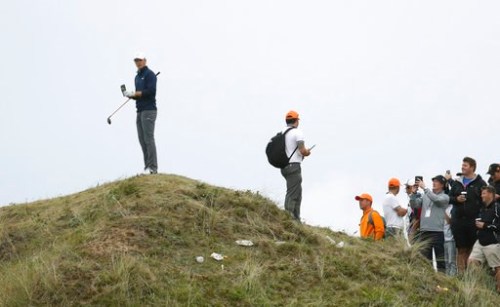by Matt Cuccaro, Ed.M.

It was unraveling before his eyes. Or was it? Jordan Spieth put on a tremendous display of discipline, courage and tenacity when it mattered most at Royal Birkdale in Sunday’s final round of The Open Championship.
Spieth started the final round with a three-shot lead on his nearest competitor and a distant six from the rest of the field. It was his tournament to win. It was also his tournament to lose. Sleeping on the lead can be an uncomfortable endeavor. After all, he was no longer the hunter; he was the hunted – at least this is how it can feel at times.
It’s common sense to appreciate that eyes and attention have a tendency to find their way to the nearest competitor, in this case the rear-view mirror. We also know this is no way to surge forward with clarity. We’ll get back to this in a bit…
Fast forward to the 13th hole, where Spieth finds himself taking an unplayable lie while losing his once cushy lead in the process. Yet, this is the moment when he stepped up like many champions before him and many will continue to do after. His attention was immediately brought to the challenge directly in front of him. It was time to bear down, settle in and get after it. No longer on the defensive, he was on the attack once again and his skills emerged. Spieth went 5-under par on the next 4 holes and closed out the tournament in style.
From a mental perspective, it’s no surprise it worked out this way. Spieth is a gritty competitor, thriving on challenge. Like many great performers, he competes his best when being the hunter. So, the question becomes…
With a lead, how do you remain the hunter when there is nothing in front to surge toward?
A lead is not something to protect, unless you want to lose it. A lead is something to build upon. Attack targets and stay assertive. The most important piece is this – it may sound counterintuitive, yet let it sink in for a moment. Be willing to mess up. Yes, mess up. Being OK with messing up leads to taking appropriate risks, remaining assertive, accepting you might lose a bit of ground, and actually gives emotional freedom to continue surging forward with courage, confidence and conviction. Lean on this mindset to stack the odds in your favor of maintaining and possibly building the lead rather than nervously “protecting it” and likely watching it disappear.
Not many have an opportunity to be in this position on a daily basis, yet keep this in the back of your mind…it may come in handy someday, when you least expect it.







